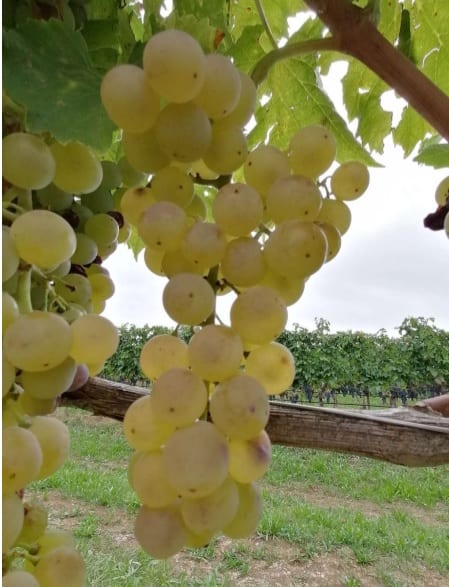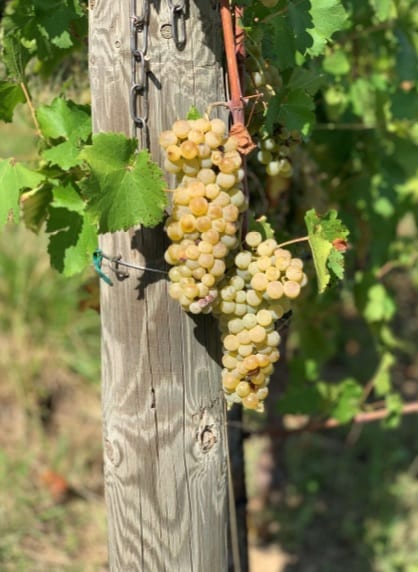
03 Dec White wines from Friuli Venezia Giulia
One thing about wine is that general statements are difficult to make. There is not one definitive way to make wine. There are hundreds of wine grapes, all different in style, taste and texture. And opinions about wine are individual. That is why I find it so surprising, and frustrating, when I hear people make the blanket statement “I don’t like white wine”. I find it impossible that there is not any least one white wine a self-proclaimed anti-white wine lover would like. There is a vast and diverse world of white wines and so many different styles and lots of wine regions around the world make wonderful white wines. In fact, in Friuli Venezia Giulia in the northeast of Italy, 77% of the wine produced there is white wine! Read about these wonderful white wines in my recent story for the Napa Valley Register.
I cannot tell you how many people have told me that they do not like white wine. I have heard it at wine tastings, at restaurants and wine bars and even from friends.
I am always surprised by such blanket statements. There is such a vast world of white wines that I cannot believe that there is not one white wine out there for everyone. For me, I love white wines because I love the variety.
There are hundreds of different white wine varieties and one region offering a vast selection of white wines is Friuli Venezia Giulia.
Friuli Venezia Giulia is a region in the northeast of Italy, bordering Slovenia and Austria and stretching from the Alps to the Adriatic Sea. There are 20,000 planted hectares and 1,700 vineyards and 90 percent of the wines produced in the region are DOP certified wines, with 12 DOCs and four DOCGs. Of the wines produced, 77 percent is white wine.
The geography of Friuli Venezia Giulia consists of 3,000-meter-high mountains, rivers, 150-300 meters above sea level hills, plains and the Val Vipara, a valley that cuts through the mountains. The Bora winds, a strong, cold, gusty wind blows through the region in the winter, and Friuli Venezia Giulia receives the highest amount of rainfall in Italy. The well-draining soils consist of gravel, flysch di cormons (repeated sedimentary cycles under water, resulting in alternating layers of marl and sandstone) and karst (formed from the dissolution of soluble rocks such as limestone, dolomite, and gypsum).
Friuli Venezia Giulia was influenced by Austrian wine culture more than Italian wine culture, and after phylloxera, the Austrians preferred to plant French varieties. While international grape varieties, including Pinot Grigio, Pinot Bianco, Chardonnay and Sauvignon Blanc, are grown in Friuli Venezia Giulia, it is also home to the largest variety of native grapes.
Friulano
Friulano is the flagship wine of Friuli. It was previously called Tocai Friulano until Hungary obtained the exclusive use of the name “tocai.” Today it is called Friulano but is also known as Sauvignonasse, Tai or Lison. A grape that goes from green to yellow within a couple days, it must be harvested immediately or else it will self-destruct with the skins dissolving from within and turning brown. Friulano produces a wine that with aromas of white flowers, apricot, green apple and almond.
Bastianich 2017 Friulano, Colli Orientali – With notes of white flowers, stone fruit, green apple and almond on the nose, the wine has chalky mineral notes on the palate and medium-plus acidity that lingers on the mid-palate.
Malvasia Istriana
Malvasia is a common grape name, but Malvasia Istriana is a high-quality Malvasia. Dating to the 13th century, it is though to originate from Croatia and eastern Adriatic. The grape has thick skins and prefers poor soils on hillside vineyards. Know as just “Malvasia” in Friuli Venezia Giulio, it can be found in the Carso DOC where it produces a mineral-driven wine, and in the Friuli Isonzo DOC where it produces a full-bodied wine. Typically fresh and fruity, Malvasia has notes of apricot, peach, apple and wisteria with a saline, diesel note.
Gradis’Ciutta 2016 Malvasia, Collio – Notes of apricot, peach, flint and saline on the nose and on the palate the wine has a slight oiliness in the midpalate but high acidity.
Ribolla Gialla
Related to Traminer and Gouais Blanc, Ribolla Gialla produces a big grape with a thin skin and high acidity. It prefers well-draining, low-clay hillside vineyards and can be found planted in the Collio and Collio Orientali areas of Fruili Venezia Giulia. Ribolla Gialla produces a wide variety of styles, from sparkling wines to light bodied to orange wines, and typically has aromas of white flowers, citrus and white pepper.
I Clivi Ribolla Gialla 2017, Collio Orientale – Notes of flint, stone and lemon zest, the wine is crisp and lean with fresh acidity and a saline finish.
Verduzzo
Not to be mistake for Verduzzo Trevigiano, which is grown in the Veneto, Verduzzo in Friuli Venezia Giulia. There are two sub-types of Verduzzo, Verduzzo Verde, which is used to make dry wines on the flatlands, and Verduzzo Giallo, planted on the hillsides and considered higher quality. A tannic grape, it produces a zesty wine with citrus, apricot and honey notes. It is most famous in the dessert wine Ramandolo DOCG made from air-dried Verduzzo grapes.
Picolit
Dating to as early as the 12th century and officially documented in the 17th century, Picolit suffers from floral abortion, a genetic malady in which the flowering buds do not develop properly and, therefore, pollination rates are poor. Crops are small but the remaining clusters are filled with flavors and produce wines with notes of ripe tropical fruit, acacia honey, white flowers and citrus. Picolit is a grape that can be picked late-harvest or air-dried for Colli Orientali del Friuli Picolit DOCG, a wine that is often compared to Sauternes.
Vitovska
A cross between Glera and Malvasia Bianca Lunga, Vitovska is also called Garganja or Gargana. Vitovska can be found planted in the Carso DOC, located along the Slovenian border. The grape produces big bunches and the resulting wine is zippy with herbal and citrus notes.
Friuli Venezia Giulia is a region that appreciates the beauty and diversity of white wines. These indigenous grapes are fun to discover and will open up your mind to the world of white wines.
Read the original story in the Napa Valley Register.
Discover more from Please The Palate
Subscribe to get the latest posts sent to your email.








